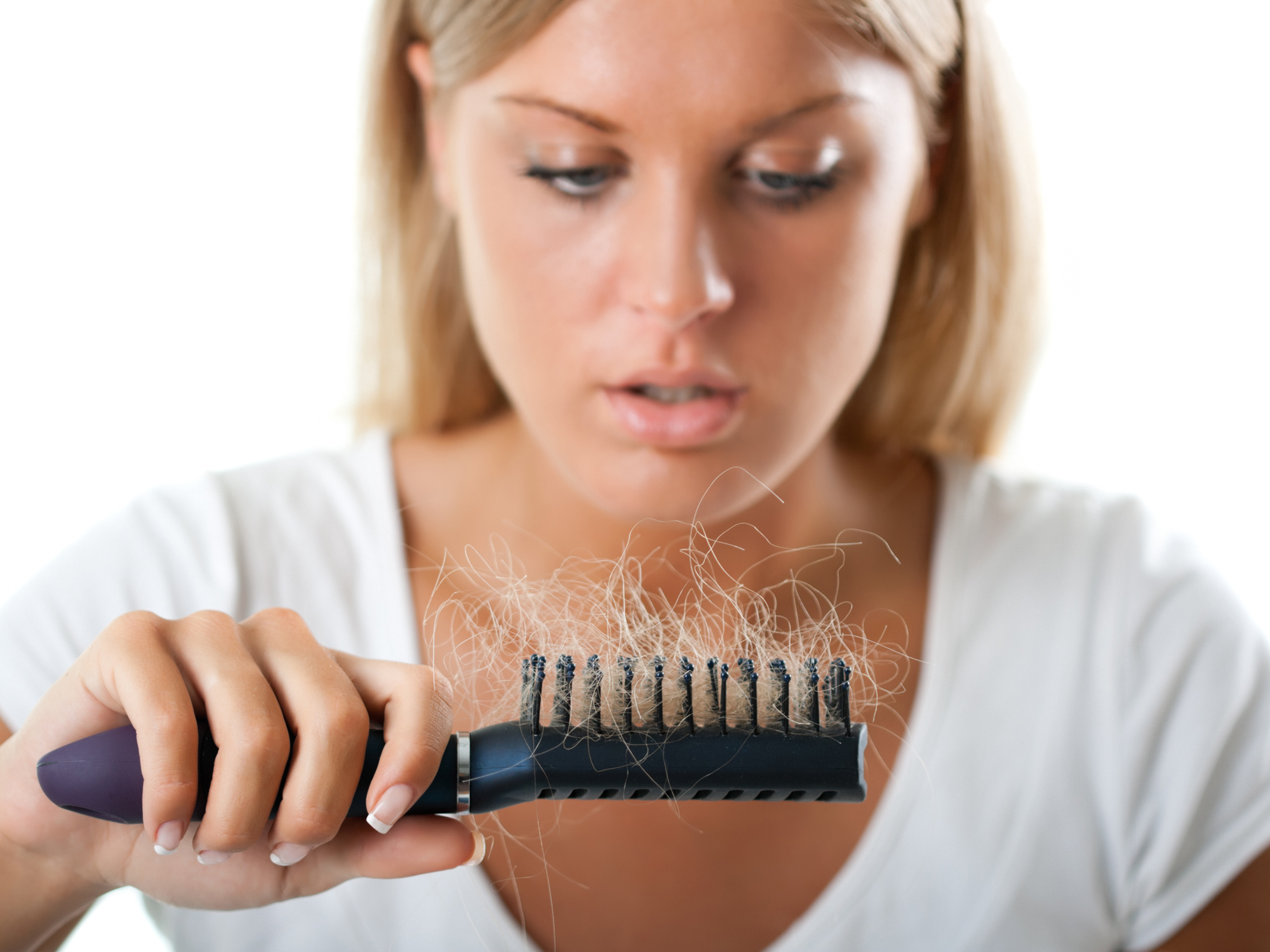Get Easy Health Digest™ in your inbox and don’t miss a thing when you subscribe today. Plus, get the free bonus report, Mother Nature’s Tips, Tricks and Remedies for Cholesterol, Blood Pressure & Blood Sugar as my way of saying welcome to the community!
Are carbs making your hair fall out?

Most of your adult life, you’ve been warned to keep the carbohydrates to a minimum.
Most of the time, the reasoning behind those warnings centered on weight loss issues.
And while a healthy weight is good enough reason alone to be carb conscious, there’s another very important reason you’ve probably never heard of…
You see, there is a sneaky little thing circulating in your blood that directly and significantly increases your risk of insulin resistance, type 2 diabetes, cardiovascular disease and hormone-dependent cancers…
It’s called sex hormone-binding globulin (SHBG) — a blood protein that is synthesized by the liver and binds to the hormones in your body. That’s because its main job is to transport hormones within your blood stream and help maintain a delicate balance of estrogen and testosterone.
When your levels are where they should be, no worries. But when your levels are too low, you’re ripe for all those nasty conditions I mentioned earlier — and some troublesome symptoms including hair loss.
Unfortunately, a lot of the foods in the standard American diet keep your SHBG levels too low.
But the good news, especially if you’re a woman approaching or experiencing menopause, you can better balance your hormone levels and decrease your disease risk just by making a few diet changes…
Foods to pay attention to
Sugar. You’re probably well aware of the burdens that sugar places upon you. In terms of SHBG, sugar and sugar-sweetened beverage consumption are two big drivers behind lower SHBG. Researchers propose this is due to higher insulin production, which subsequently prevents liver synthesis of SHBG. And remember, it’s the low SHBG that increases your risk of disease.
Fructose. A type of sugar that can be found in ‘natural’ sugar sources such as honey, molasses, and agave, along with fruits such as apples, cherries, mangoes, watermelon and pears. Like sugar it has been shown to reduce the production of SHBG, likely because fructose is metabolized predominantly by the liver and therefore inhibits synthesis of SHBG.
Potatoes and beans. These foods are high in overall carbohydrates and as such you should monitor your consumption, as they are borderline associated with lower levels of SHBG when consumed in excessive amounts.
My colleague, Margaret Cantwell, believes you should drop potatoes from your table. But if you can’t, try to enjoy them only occasionally. Limit beans to a maximum of half a cup per serve. Good replacements for these are ground vegetables like broccoli, cauliflower and cabbage.
Glycemic load. Glycemic index (GI) and glycemic load (GL) are measures of how quickly foods affect blood sugar levels. Foods with a high GI/ GL, quickly spike blood sugar levels, while low GI/ GL foods are slower release foods with a lesser effect. But it’s not only blood sugar that’s influenced — high GL foods lower your SHBG levels.
The message here is, stick to low GI, low GL foods.
Use the following chart for some comparisons:
| High glycemic load (GL) | Low glycemic load (GL) |
| White bagel – 25
Packet cake mix – 24 White bread – 13-17 Soft drink – 25 Coco Pops – 20 White rice – 29 Macaroni and cheese – 33 Potatoes – 33 Fruit roll ups – 33 | Wheat tortilla – 8
Pumpernickel bread – 7 Whole wheat bread – 9 Tomato juice – 4 All bran – 9 Quinoa – 13 Whole grain spaghetti – 17 Green peas – 4 Carrots – 3 |
In general, you’ll find that most vegetables, beans, legumes and whole grains have a lower GL. You can also search the Glycemic Index database to compare food sources.
Fiber. Many low GI/GL healthier forms of carbohydrate also happen to be high in fiber, which is great because fiber increases your SHBG levels.
High fiber foods include:
- Artichoke
- Asparagus
- Spinach
- Brussels sprouts
- Broccoli
- Raspberries
- Blueberries
- Almonds
- Pecans
- Peanuts
- Bran
- Quinoa
- Brown rice
Editor’s note: Mainstream medicine recently ‘announced’ that all type II diabetics will need insulin injections, eventually. Not so fast… I call that FAKE NEWS because you’ve just read that insulin resistance — even type 2 diabetes — is much about the food you eat! The truth is they don’t want you to know the proven, simple tricks that lower your blood sugar found in Dr. Michael Cutler’s guide, Forbidden Secrets From Nature’s Pharmacy to Reverse Diabetes and Blood Sugar Problems! Get your copy today, plus 3 FREE gifts!
Sources:
- Huang M, et al. Relation of Dietary Carbohydrates Intake to Circulating Sex Hormone-Binding Globulin Levels in Postmenopausal Women. — J Diabetes. 2017.
- Glycemic index and glycemic load for 100+ foods — Harvard Health Publications. (2017). Retrieved 30 May, 2017
- Fiber — Oregonstate.edu. (2014). Linus Pauling Institute. Retrieved 30 May, 2017













